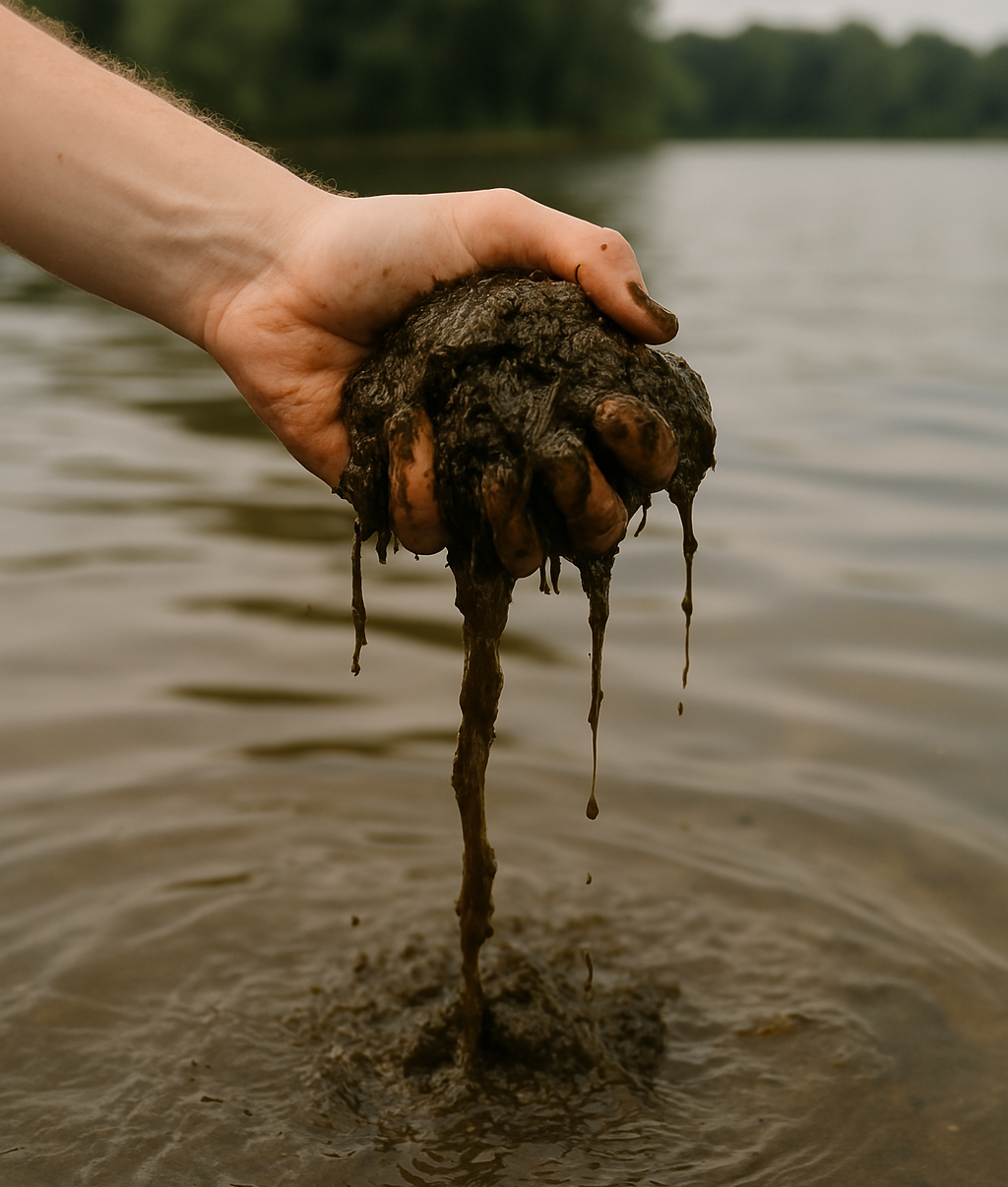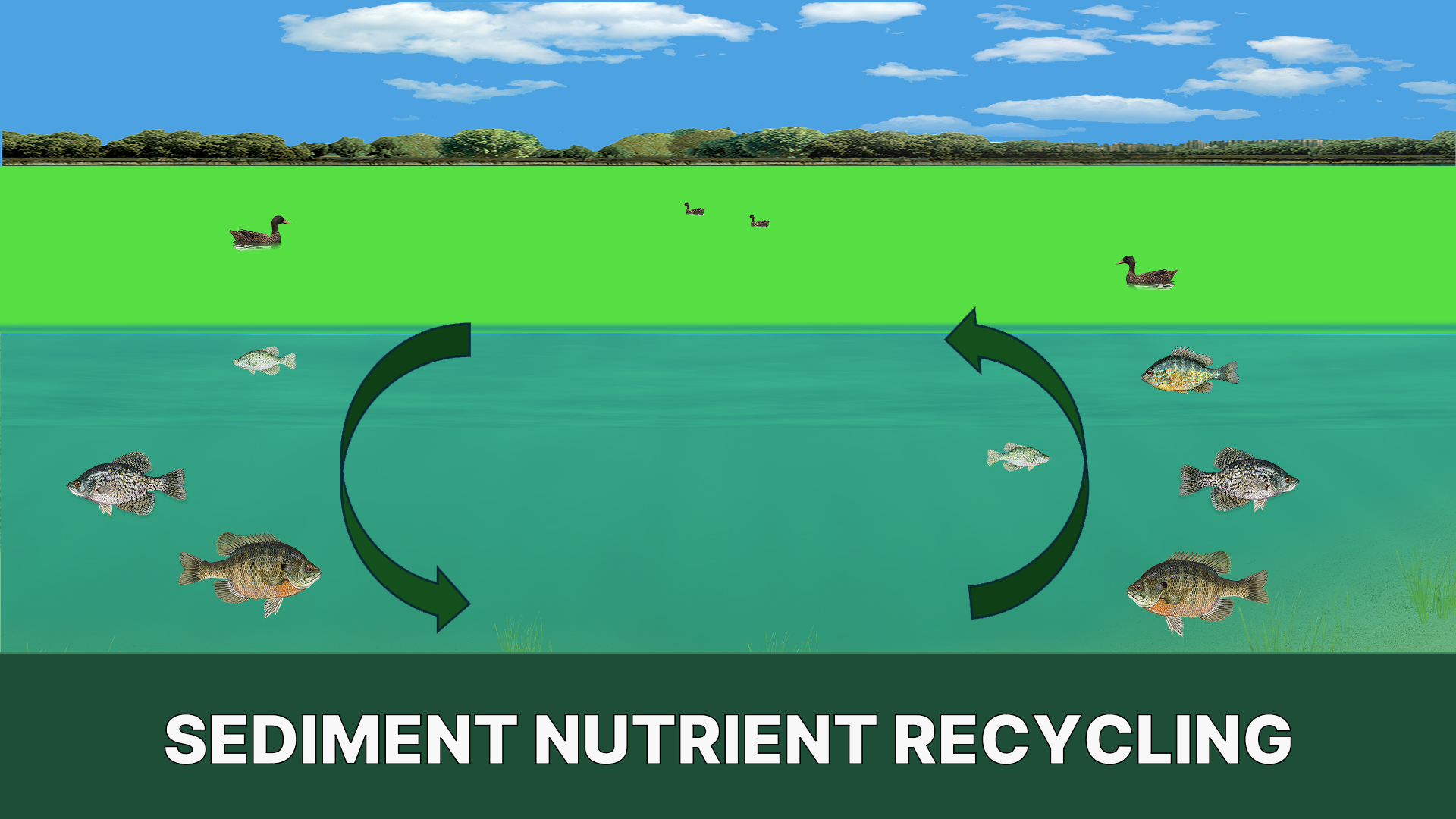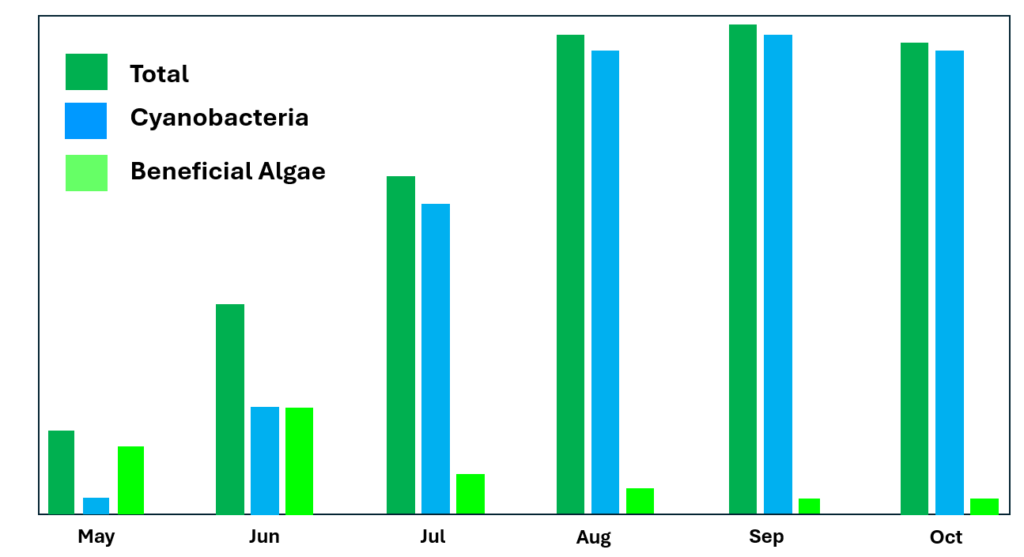

Sediment Nutrient Recycling
What Is Sediment Nutrient Recycling
Sediment accumulates when dead leaves, algae and weed biomass sinks to the bottom and decomposes, depleting oxygen from the bottom of the water column, creating hypoxic conditions.
In hypoxic water, nutrient recycling rates and concentrations are elevated, setting up a vicious circle of feedback that fuels more algae and weed growth.

Why Sediment Nutrient Recycling Matters?
Sediment nutrient recycling becomes a self-sustaining nutrient supply for algae and invasive weed growth, and decomposing biomass sustains hypoxia.
That means it drives a shift in a water body’s core behavior from nutrient clearance and maintenance of water quality to nutrient recycling, eutrophication, and degradation of water quality.

How Do You Measure Sediment Nutrient Recycling?
Bathymetry
🔹The key to understanding the threat that sediment nutrient recycling poses is found in bathymetric data – that is the depth profile of a lake.
🔹When hypoxic water covers organic sediment, the microbiology changes as anaerobic microbes thrive, and they drive nutrient recycling.
🔹Therefore, by having detailed bathymetric data, when dissolved oxygen measurement reveals at what depth hypoxia begins, we can quantify what percent of the surface area of the sediment is overlaid by hypoxic water and promoting nutrient recycling.
Phytoplankton Data
🔹High phytoplankton biovolume and a predominance of cyanobacteria among the phytoplankton indicate that sediment nutrient recycling and an abundance of recycled benthic nutrients are at play.
🔹Increased algae levels, in general, show that nutrients are abundant.
🔹An increase in cyanobacteria levels indicates that anoxic benthic conditions are ensuring nutrients are more available at the bottom, where cyanobacteria that can control their buoyancy, dive down to preferentially access these nutrients, and outcompete floating algae.

CLEAN-FLO
827 Lincoln Avenue, Suite 1
West Chester, PA 19380
Phone: 800-328-6656
E: contact@clean-flo.com

